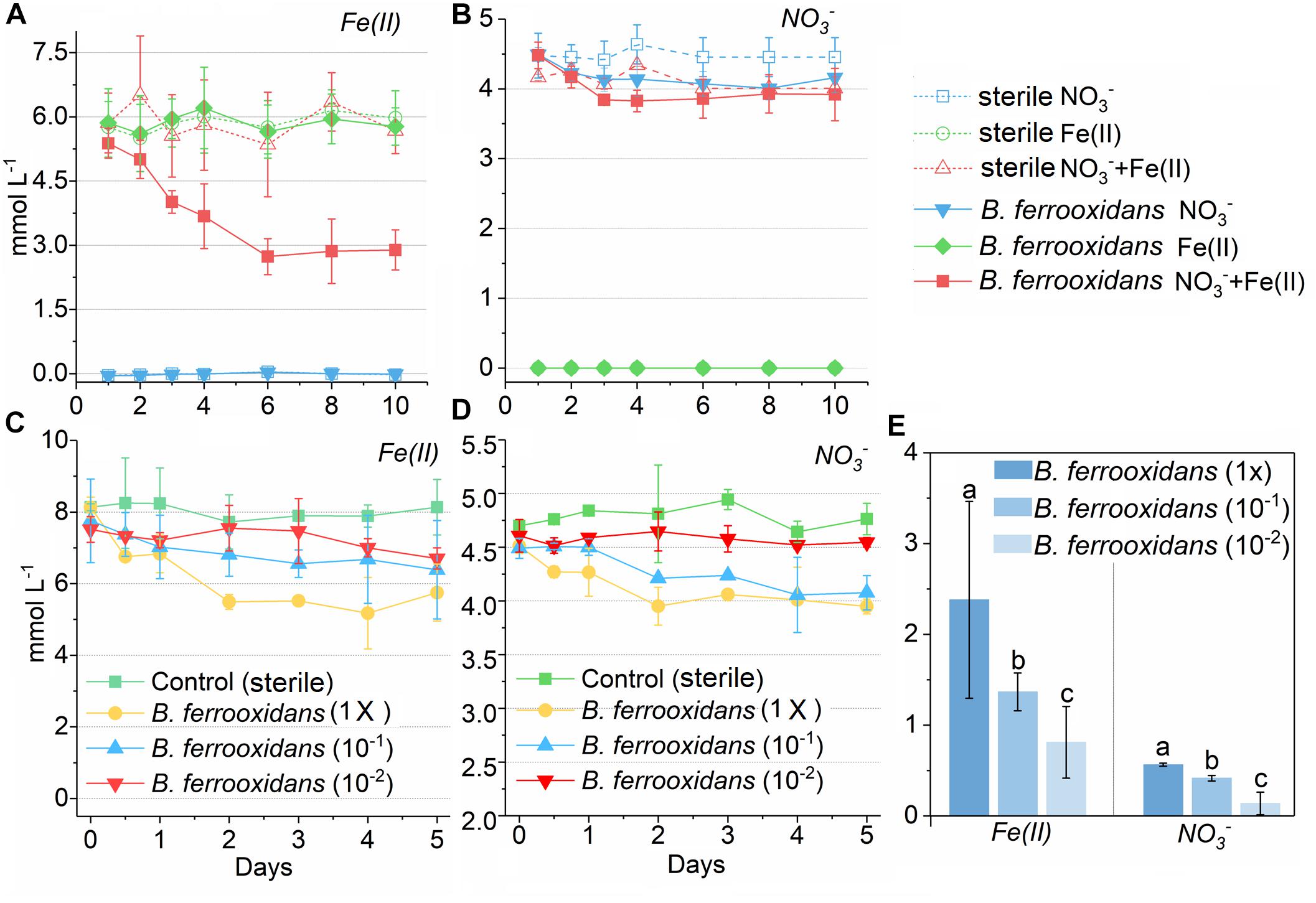

Microorganisms capable of anaerobic nitrate-dependent Fe(II) (ferrous iron) oxidation (ANDFO) contribute significantly to iron and nitrogen cycling in various environments. However, lab efforts in continuous cultivation of ANDFO strains suffer from loss of activity when ferrous iron is used as sole electron donor. Here, we used a novel strain of nitrate-dependent Fe(II)-oxidizing bacterium Bacillus ferroxidians as a model and focused on the physiological activity of cells during ANDFO. It was shown that B. ferrooxidans entered a metabolically inactive state during ANDFO. B. ferrooxidans exhibited nitrate reduction coupled with Fe(II) oxidation, and the activity gradually declined and was hardly detected after 48-h incubation. Propidium monoazide (PMA) assisted 16S rRNA gene real-time PCR suggested that a large number of B. ferrooxidans cells were alive during incubation. However, 2H(D)-isotope based Raman analysis indicated that the cells were metabolically inactive after 120-h of ANDFO. These inactive cells re-awakened in R2A medium and were capable of growth and reproduction, which was consistent with results in Raman analysis. Scanning electron microscopy (SEM) observation and x-ray diffraction (XRD) revealed the formation of Fe minerals in close proximity of cells in the Fe(II)-oxidizing medium after Fe(II) oxidation. Overall, our results demonstrated that continued ANDFO can induce a metabolically inactive state in B. ferrooxidans, which was responsible for the loss of activity during ANDFO. This study provides an insight into the ANDFO process and its contribution to iron and nitrogen cycling in the environments.

Concentration kinetics of ferrous iron and nitrate in two experiment during incubation. Concentration kinetics of ferrous iron (A) and nitrate (B) in the media containing NO3-, Fe(III) as well as both NO3- and Fe(III) during 10 days incubation with or without presence of the bacterium Bacillus ferrooxidans, respectively. Concentration kinetics of ferrous iron (C) and nitrate (D) in the FeOM during 120 h incubation with different concentrations of B. ferrooxidans cells. The error bars represent standard deviations of three replications. FeOM represented the FeOM. (E) Total amount of Fe(II) and NO3- consumed in treatments of B. ferrooxidans (1×), B. ferrooxidans (10–1), and B. ferrooxidans (10–2) during the incubation. Different letters (a–c) in the bar graphic indicate significant difference between the treatments at P < 0.05.